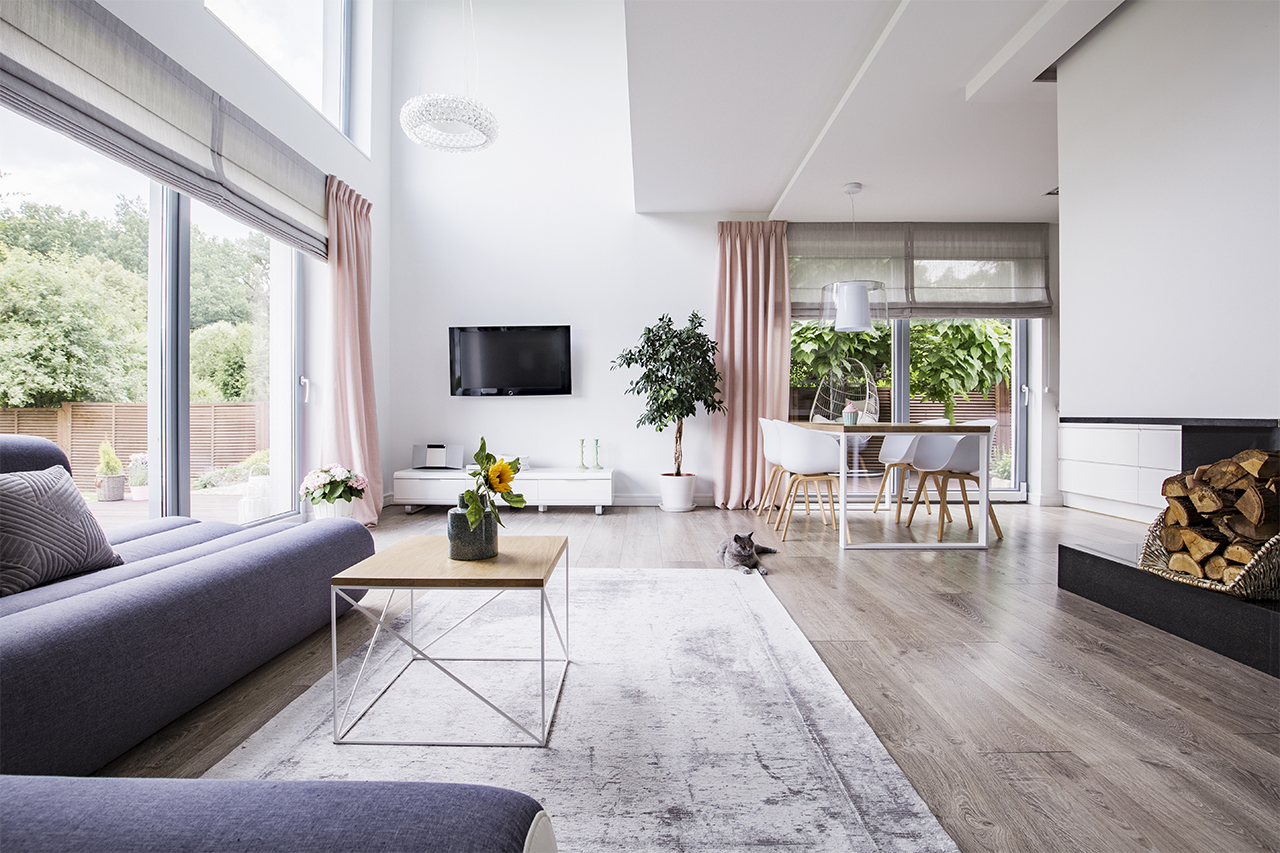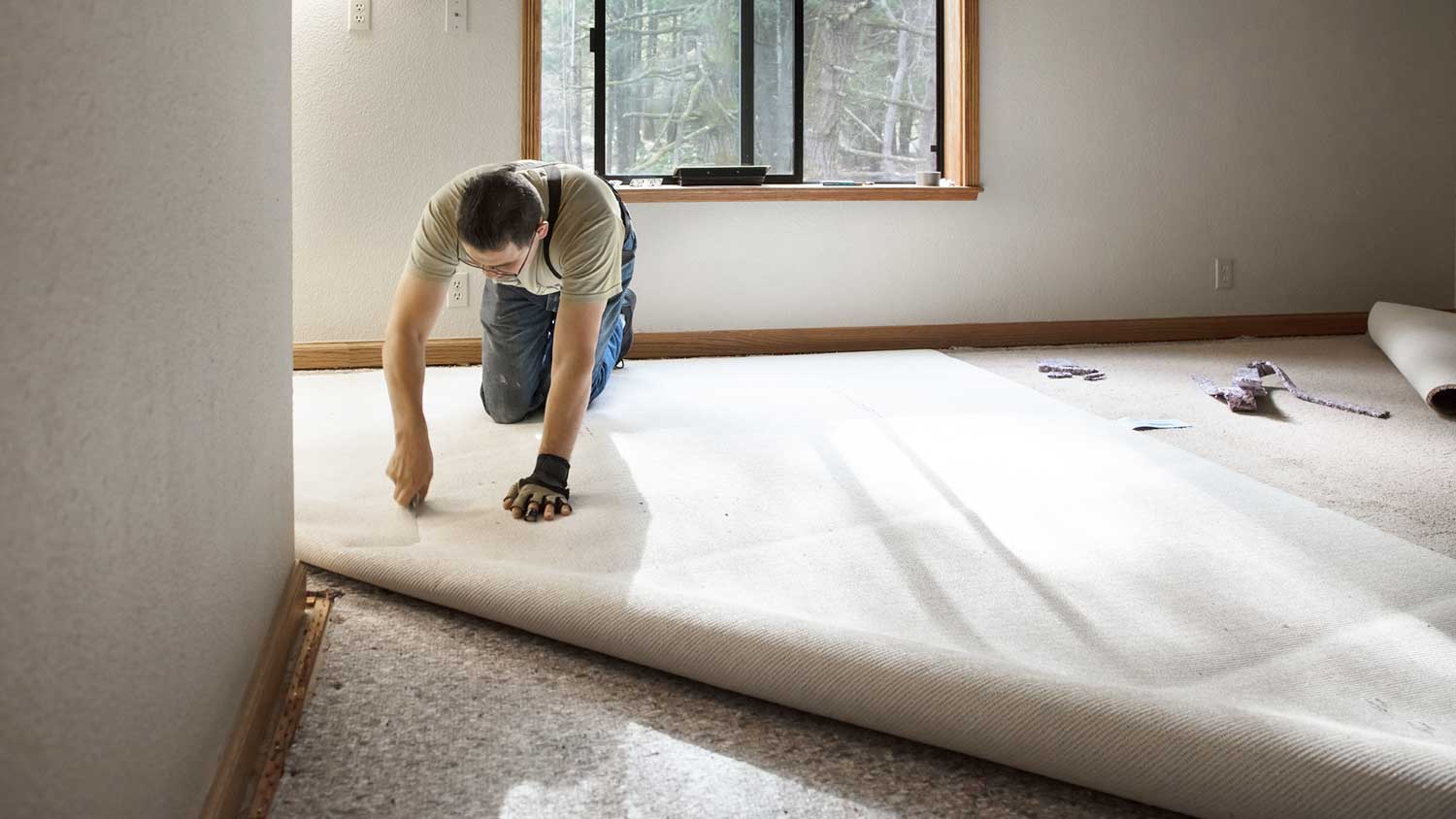
Professional rug cleaning costs depend on the material, the type and extent of damage, and labor costs in your area. This guide breaks down rug cleaning costs to help you budget.
Don't get cold feet when determining how much carpet you'll need


Installation and materials average $700-$2,600, depending on the type, regional pricing differences, and how much furniture needs moving. Get multiple quotes and find a carpet installer near you today.
To measure for a carpet, measure each area individually following the steps listed below. Figuring carpet area means multiplying width times length for each area and adding them together. You’ll follow slightly different methods for rooms and stairs.
Area = Length x Width.
Measure the length using the distance from one wall to the opposite wall.
Measure the width from wall to wall.
Add 2 to 4 inches to each side. This accounts for waste, doors and slanting walls. It’s easy to cut a little off for a perfect fit, but it’s impossible to add without creating unsightly seams.
Multiply the length times the width. This is your total square footage for that room.
Repeat this process for each room.
Width x ((Run+Rise+Nose) x Number of stairs) = Area
For a straight staircase:
Measure the rise and run. Add them together. Include an inch or two extra to wrap around the nose.
Rise: height of the step.
Run: length of the step.
Multiply that by the number of stairs.
Divide by 12 and round up to get the number of feet.
Measure the width of the stairs and round up to the nearest foot.
Multiply the width from step 4 by the length from step 3.
Add in any landings you have. Multiply the width and length of the landing. Add that number.
If you have an irregular, circular or unique setup, it’s best to hire a professional.
For a stairwell with 13 stairs and one landing:
7+7+2 = 16 inches. 7 inches for each rise and run plus two inches for the nose and overage
16 inches x 13 stairs = 208 inches.
208 inches/12 = 17.33 (round up) = 18 feet.
4 x 18 = 72 square feet. Width is 4 feet.
4 x 4 = 16 square feet for the 4-foot by 4-foot landing.
72+16 = 88 total square feet.
Total area + 10%-20%
When you measure for carpet, expect at least 10% waste. If you have a unique layout, up that to 20%.
With so few width options, you’ll likely end up with plenty of waste. However, if you simply cut up the rolled carpet to minimize waste, you’d end up with a disaster of patchwork seams. You’ll have higher waste with carpet than other types of flooring due to the standard roll sizes.
For a whole house with two 10’x10’ bedrooms and a 9’x15’ living room:
To Cover: 335 square feet
Carpeting To Purchase:
Bedrooms: Two 12’x10’ pieces. One for each
Living Room: One 12’x15’ piece.
Total Needed: 420 square feet (21% waste).
Retailers sell carpet in precut widths on a roll, most commonly 12 feet in width. 13.5- and 15-feet widths are also available. If you have a room 10 feet wide by 10 feet long, you’ll need to purchase a 12 foot by 10-foot section of the roll.
A couple of notes to consider before purchasing:
Be skeptical of carpet ratings. Often, they’re rated by the manufacturer for marketing purposes, not for any standardized ratings in the industry.
Hide the seams in doorways. Because of the standard roll sizes, measure your home room by room to the midpoint of doorways. This leaves all seams hidden under doors.
Carpet remnants. These common roll widths mean you’ll purchase more carpet than you actually need, typically about 10% to 20% more. These extra pieces are called remnants. Use them in out-of-the-way spots like closets.
Get it from a professional installer. When you hire a carpet professional, they’ll only charge you for actual square feet installed. They usually account for a small amount of overage and waste, usually 10%.
Width x Length = Area
Total Square Feet / 9 = Square Yards
To calculate the square footage of carpet you’ll need, multiply the length times the width, in feet, of any space where you’ll install flooring. It also helps to sketch out a diagram of your home’s layout. It doesn’t need to look good, but make sure the measurements are accurate.
Most retailers now sell by the square foot. However, some professionals still use the older method of square yards. To find the square yard, simply divide your square foot number by nine.
Carpet tiles often come in 12-inch by 12-inch (12”x12”) or 24-inch by 24-inch (24”x24”) squares. If you want to minimize waste, consider using carpet tiles. Typically sold for high-traffic commercial spaces, it both minimizes waste and makes it easy to replace small sections.
The type of carpet you choose, like the popular Berber carpet, has no impact on how you’ll measure your floor, only your budget and design.
Choosing the right type of carpet for your home does mean varying costs and design choices. As part of your flooring research, look into the various types in our carpet buying guide. Then calculate carpet costs by type.
Calculating the size of the rug you need depends entirely on the aesthetics of the room. Typically, you’ll want one to cover high traffic areas. For best results, leave a few feet around the edge of the rug to the wall. If you’re unsure what size you need, hire an interior decorator.
From average costs to expert advice, get all the answers you need to get your job done.

Professional rug cleaning costs depend on the material, the type and extent of damage, and labor costs in your area. This guide breaks down rug cleaning costs to help you budget.

Discover how much carpet padding costs to install based on factors such as the size, thickness, density, and local labor rates.

Budget for how much it costs to repair carpets based on factors such as material, room size, and maintenance frequency.

Wondering who installs carpet? Learn whether to hire a carpet installer or contractor and how pros handle installation. Get started today.

If you’re preparing to demo part or all of your home’s interiors, read this guide first to determine how much you can expect to pay for these services.

Budget for the cost to put in a subfloor based on factors such as location, materials, labor, repairs, new flooring, and more.